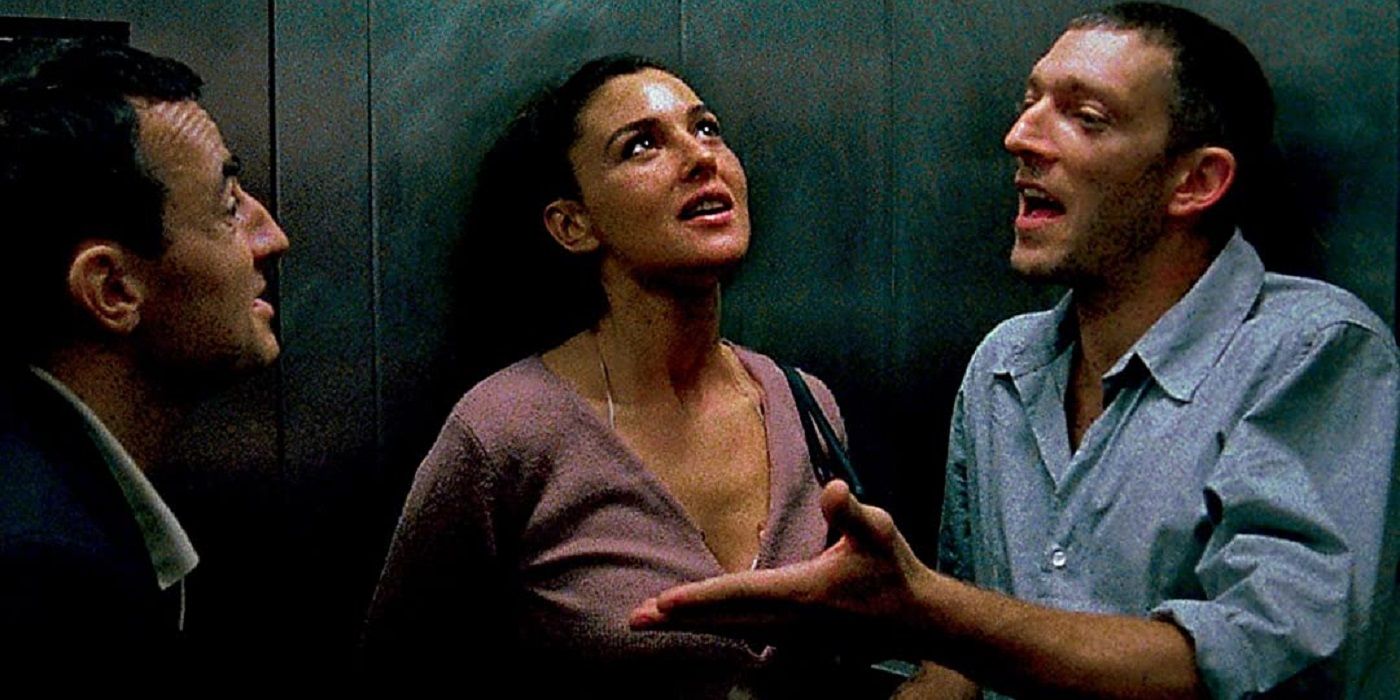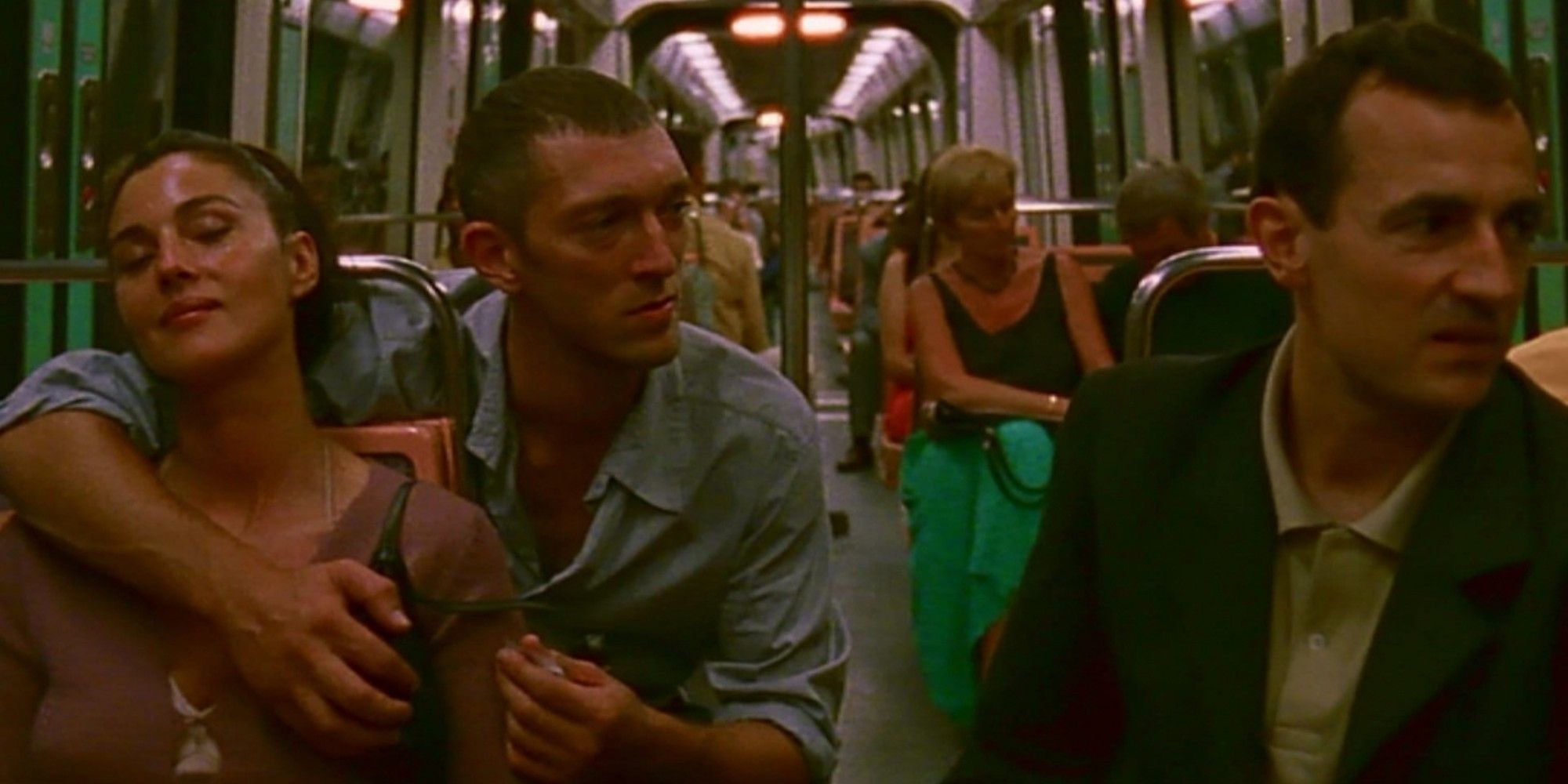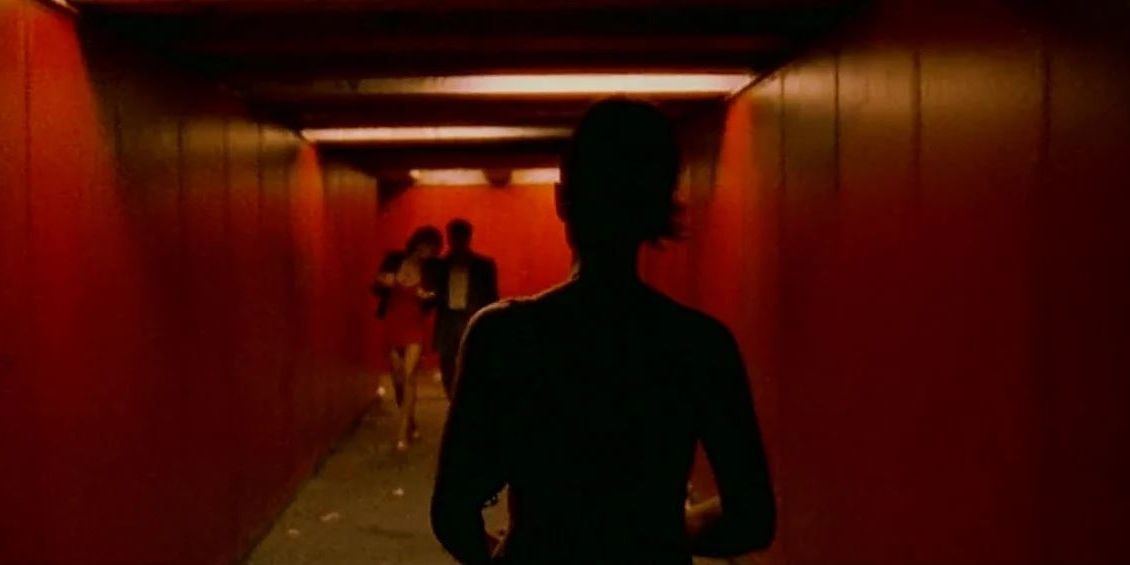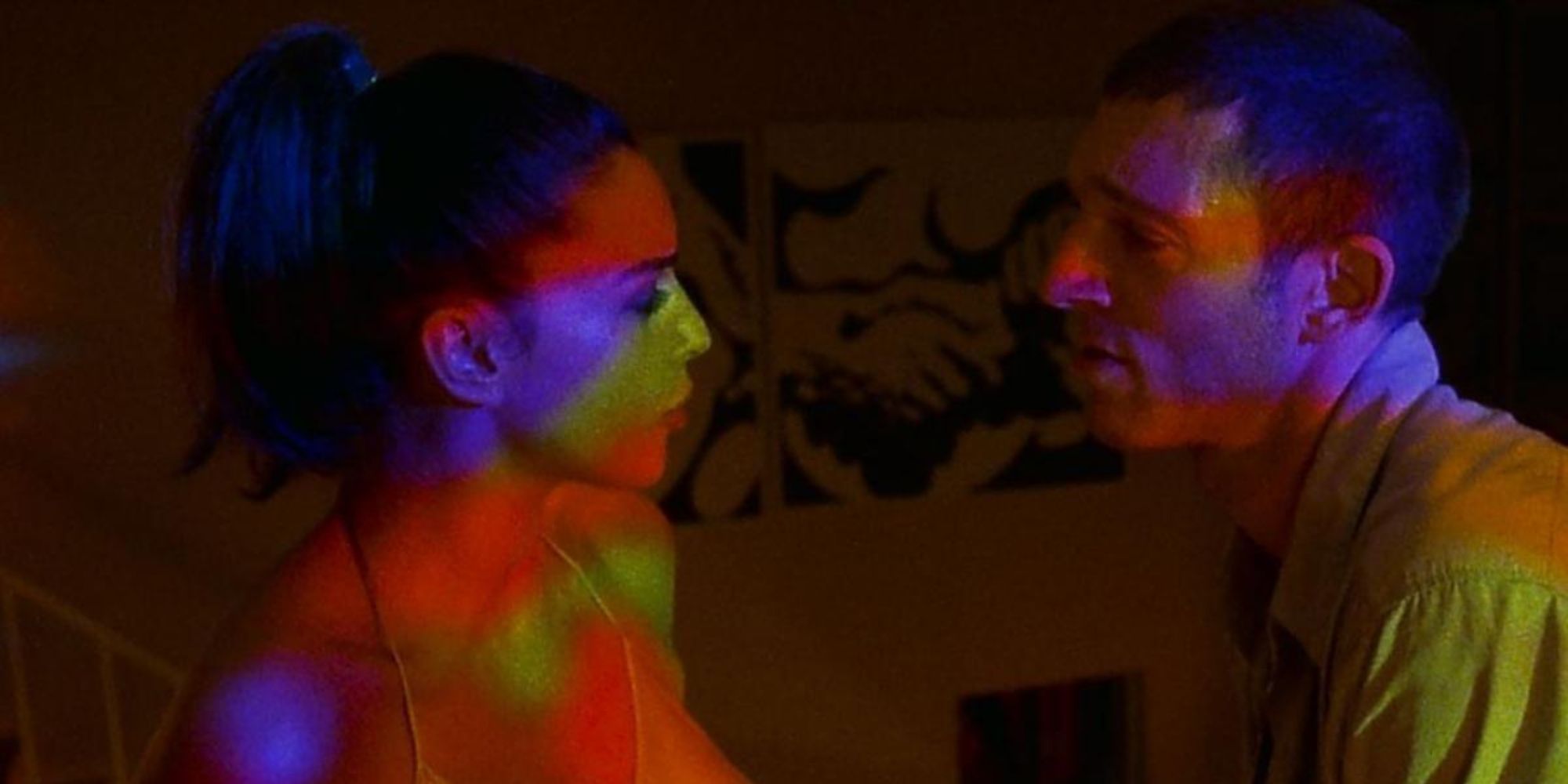Gaspar Noé is widely known as quite the provocateur whose films are often best approached as viewings that are meant to be experienced rather than enjoyed. They are often incredibly brutal and dive into the deepest parts of humanity that most believe are best kept hidden or, at the very least, not presented in mainstream media. Noé, however, forces his audiences to look. His work forces you to gaze into the deepest recesses of depravity and refuses to let you walk away unscathed. To this end, it isn’t an understatement to say his 2002 film Irreversible leaves absolutely no holds barred. It will purposefully leave you feeling physically ill, disoriented, and utterly dejected.
The film takes place in the course of a day, and it follows the events that occur before and after a woman named Alex (Monica Bellucci) is horrifically raped. Except the audience witnesses all the events in reverse. The film begins with her boyfriend Marcus (Vincent Cassel) and ex-boyfriend Pierre (Albert Dupontel) seeking vengeance on her attacker. As the story unfolds, we slowly learn everything that led up to the infamous fire extinguisher murder that occurs within the first 30 minutes of the film.
Nearly 20 years later, Noé re-released Irreversible: Straight Cut. Unlike his original director’s cut, this director’s re-cut presents the events to his audience in chronological order. Rather than first meeting Alex after her attack, we now begin the story with her. If the original cut of Irreversible can be understood as a film that evokes a strong sense of melancholy by the end, its straight cut brings on an incredibly strong feeling of vitriolic anger. In many ways, this straight cut certainly reveals that time, and the ways in which we experience it, truly does reveal everything.
A Story Told in Reverse
Irreversible is nearly a completely different film when watched in sequential order. The biggest difference between the two viewing experiences of Irreversible is, unsurprisingly, the way in which we meet Alex. This switch in the order we witness the events unfold radically changes the ways in which we understand the story. At the beginning of the original cut, it is incredibly difficult to understand what the hell is going on. Everything from the camerawork, lighting, setting, and dialogue is utter chaos. We don’t know what incited this rampage the two men, Marcus and Pierre, have embarked on. All we know is that one was arrested and the other taken into an ambulance.
Viewers are kept so busy constantly trying to reorient themselves that it becomes nearly impossible to make complete sense out of what caused the ensuing mayhem onscreen. Right off the bat, the audience is shoved into a setting full of animalistic anger in which the men’s reactions to the events dominate the rest of the film. In other words, beginning the film at the end centers on the male perspective, and it colors how we experience the rest. The first time we meet Alex is immediately after the attack. Her face is disfigured as she is being carried away while unconscious on a stretcher. Moments later, right in the middle of the film, she walks down the street and into a red-soaked tunnel where viewers are forced to watch in abject horror as Alex is utterly brutalized and violated for nine entire minutes. For once, the camera is steady and lies on the floor as her hand seems to reach toward it. Toward us. In the distance, we see what seems like a male figure walking in on the scene only to turn away.
Each second of this sequence feels like an eternity and anchors the vastly different halves of the film. In comparison, every moment after almost seems like a palette cleanser with a bitter aftertaste and the brutality of the first half manages to nearly convince you to forgive Marcus’ bigoted-tinged vitriol as twistedly justified. Then, for the first time, we see Alex. We see her smile, dance, kiss, and throw her head back in laughter. Only after knowing what happens to her are we allowed to know her. Though the film ends with Alex at peace reading in a lush park filled with greenery, the imagery is tainted with the knowledge endowed upon the viewer of what’s to come. We are left only thinking of her, what could have been, and what will inevitably be.
Where’s Alex? The Straight Cut Reveals All
Alternatively, the straight cut begins with Alex in the park. Unlike the madness of the original director’s cut, we can linger on these moments with her and be present. She now centers everything we experience afterward. The brief moments with her alone appear to last longer than before and, strangely enough, we seem to be given more insight on her character despite having seen these same exact scenes before. We revisit the moments between Alex and Marcus that felt tender when presented in reverse chronological order, however, they now strangely take on a much more sinister air. Instead of watching a couple make blissful love in their cozy apartment, moments where Alex hugs herself as Marcus climbs on top of her begin to stick out as wildly unsettling. While he kisses her body, Alex can be seen staring straight ahead. The kiss while she showers no longer feels tender, but the clear curtains evoke the sense that she is in a fishbowl under his gaze.
The scenes with Alex, Pierre, and Marcus continue this trend. What seemed like mostly harmless banter in the original cut, now even more obviously highlights the ways in which both men center their conversations with her around her body and sex. Notably, while conversing on the train, Marcus has his arm fixed around her neck as the two men converse while Alex mostly stares ahead. In these ways, the film foreshadows Marcus’ actions during (what is now) the end of the film. He is less of the extremely flawed yet doting boyfriend and more akin to the likeness of her rapist.
Marcus’ dialogue in their scenes alone together parallel a number of lines spoken by her attacker later on in the film as do his actions. In the same way we first encounter the rapist in the tunnel attacking a sex worker as Alex looks on in horror, we later witness Marcus attacking that same sex worker in a manner eerily similar to the scene Alex witnessed. Marcus no longer comes off as seeking revenge against his girlfriend’s rapist, but as a man angry that something of his was stolen and uses it as an excuse to blindly partake in the same senseless violence she suffered from rather than sitting by her side in the hospital. As we revisit the final act in a club called The Rectum, Alex is wholly forgotten in his blind rage. What becomes even more evident in the straight cut is that the wrong man even dies for it. Through witnessing the events chronologically, we no longer finish the film with Alex but in utter disbelief that what happened to her was all but forgotten. Once again, left alone.
The Verdict
When viewed chronologically, the film’s concern with criticizing masculine violence is much more obvious. What first seems like a revenge film is quickly unraveled. Even Pierre, the supposed foil to Marcus’ more overtly violent and hypersexual tendencies, succumbs to this rage. Despite being our “nice guy” figure, it is no coincidence that he is the one who actually lands the final blow on (and murders) the man they believe attacked Alex. Though he often tries to feebly dissuade Marcus and attempts to convince him to go see Alex in the hospital instead, it becomes even more evident that Pierre enables this behavior before finally partaking in it himself.
Pierre is always free to abandon Marcus to act on his own devices but chooses to follow him until the bitter end despite having no loyalty to him before this night. Even though he says the right things, Noé’s characterization of Pierre cements the film’s themes regarding the condemnation of violence against women and how even the seemingly least culpable men still implicate themselves in and help to perpetuate said violence. This is made even more explicit in the straight cut once it ends with a conversation between two men where one admits he slept with his own daughter while the other consoles him. While the original cut leaves us mournful for Alex’s return to her slice of heaven in the park, the straight cut leaves us to wallow in unrelenting and continuing violence.
All the observations made upon viewing the straight cut are still present within the original, however, the switch in chronology opens up swaths of information easily buried in the chaos of the original. The revelations the straight cut brings to light, however, do not necessarily make it superior. Instead, the straight cut justifies itself as an entirely new film meant to be viewed in conjunction with the original. Even though they are both made of the same parts, they build upon each other to make the story whole. In this way, it is best to experience Irreversible as a film told in two parts. One isn’t necessarily better than the other; however, the straight cut is undeniably a lot stronger when you’ve seen the original cut beforehand.




